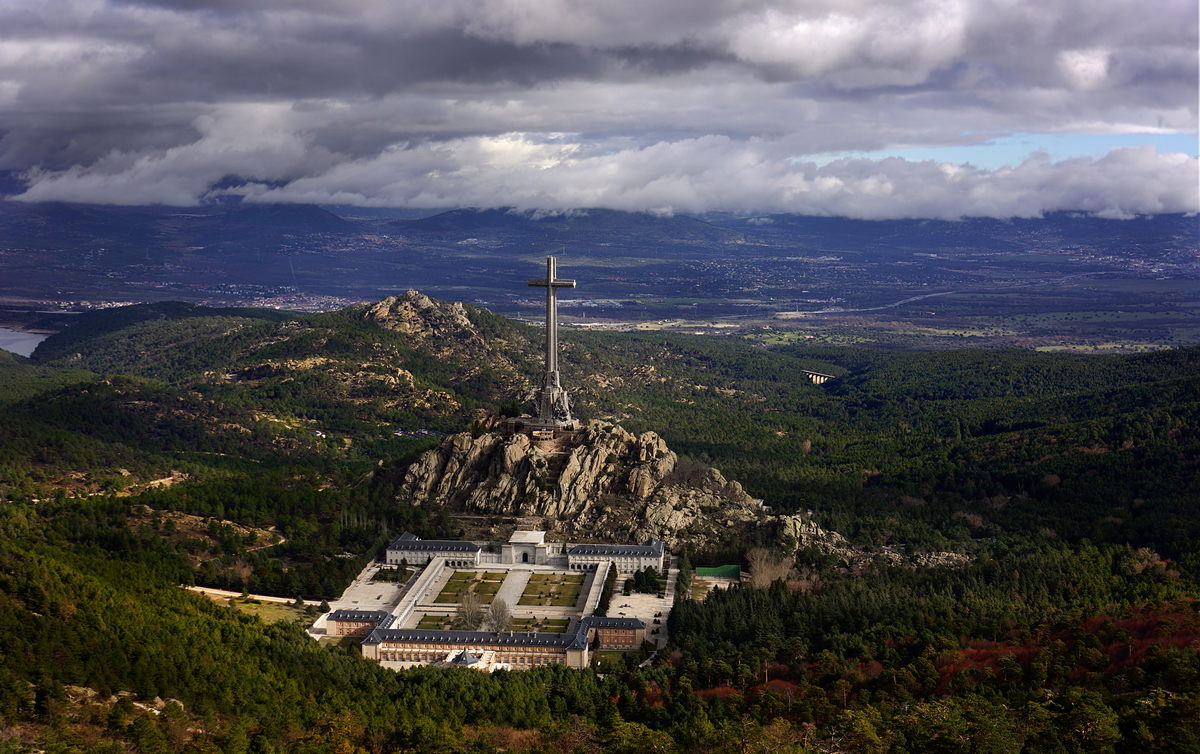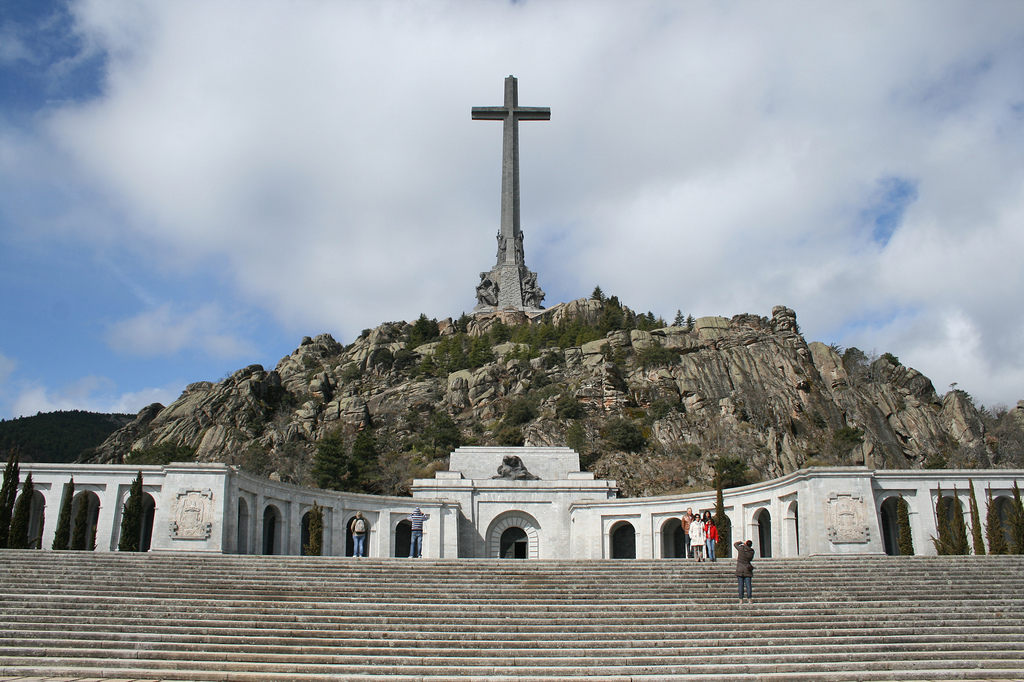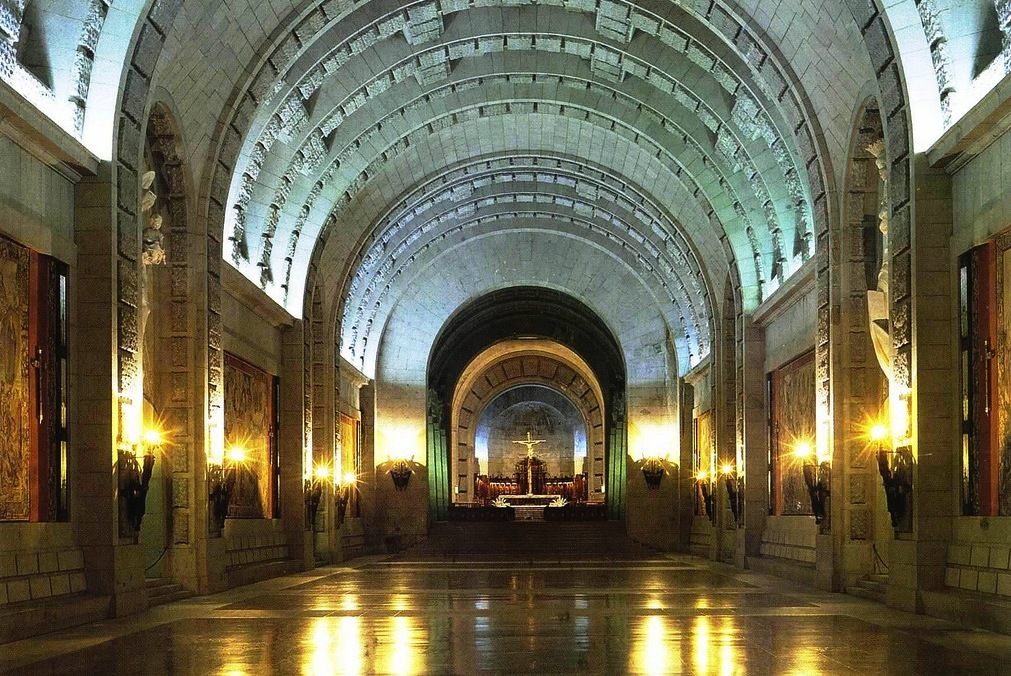
This underground church is crowned with a 500-foot cross and seen by many as a symbol of fascism to this very day.
A tragic number of soldiers perished on both sides during the Spanish Civil War of the 1930s. As both a burial monument and as a memorial church, the breathtaking Valley of the Fallen (Valle de Los Caídos) was the creation of Spanish dictator Francisco Franco, and despite its intended purpose, many still see it as a representation of his abuse of power.
The monumental complex is built on and into the slopes of a mountain range and comprises various sections. A courtyard is spread out at the base of the mountain in a wide arc boasting majestic porticoes, while the church is actually built into the hillside. This is also the resting place for Franco himself, though not for long. The 500-foot (152-meter) cross that extends from the tip of the mountaintop is simply titanic with huge figures at its base, it can be seen from miles around.
On Franco’s orders, the construction of the Valley of the Fallen began in 1940 and continued for 18 years, finally finishing in 1959. The bodies of over 40,000 people who died during the civil war were laid to rest here and Franco hailed his creation as a “work of healing”. Not everyone felt the same, many accusing the leader of forcing political prisoners to labour on the construction, which itself was also seen as a colossally unnecessary and expensive showpiece. Despite the possibly troublesome origins of the Valley of the Fallen, it still manages to retain a monumental sense of awe even if it is a fascist masterpiece.


Last week the government approved a Bill of Law, or Royal Decree, allowing the remains of Franco to be exhumed from the Valley and be moved to another burial place.
A long-running campaign had been calling for Franco to be moved from this enclave which is dedicated to martyrs, heroes, and victims of war and oppression, since he is not considered to be a 'hero' and deserving of the honour of a burial place in such a place.
The law reform makes the exhumation 'urgent' and must be validated in Parliament within a month.
Left-wing parties across Spain voted in favour of the law reform, whilst centre-right Ciudadanos abstained and the right-wing PP voted against, as well as announcing possible legal action against the decision to move Franco on.
Unless Franco's relatives – his grandchildren, following the recent death of his daughter Carmen – specify a burial site which the government approves, then the State will decide where he should be interred.
This will be 'somewhere dignified', as befitting a treasured relative, but not somewhere he would be 'honoured', given the mass torture, death and deprivation of human rights Spain suffered during the 36 years of his dictatorship, from the end of the Civil War in 1939 to the year before his death, which was in 1976.